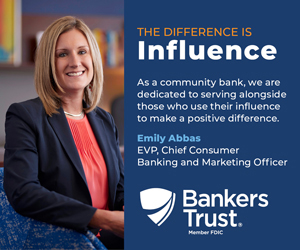The Elbert Files: Rural Iowa’s conundrum

“If you look out broadly and objectively, you’ll conclude that nothing we’ve done is working,” economist David Swenson said about rural Iowa during a recent podcast.
“Sixty of Iowa’s 99 counties had their peak populations in 1940,” he noted. And things have mostly gone sideways or downhill since then.
Swenson was a guest on the podcast “We All Want Clean Water” hosted by the University of Iowa’s Silvia Secchi, Chris Jones and Dave Cwiertny.
Years of research that Swenson did before retiring from Iowa State University last year convinced him the decline of rural Iowa is tied to the way the state was settled.
Iowa’s population quickly tripled between 1860 and 1890, when the equivalent of four farm households settled on every square mile of Iowa land, boosting population from 675,000 to more than 1.9 million in just 30 years.
Since then, however, economies of scale and technology have “systematically expelled people from the land,” he said.
Two major advances that followed World War II – mechanization and nitrogen fertilizers – meant farmers no longer needed large families to work the land; children, who had previously stayed on the farm, began leaving.
The farm crisis magnified problems, and Iowa’s 4.7% decline in population between 1980 and 1990 marked the first time since the first decade of the 20th century that the state lost population.
“Rural communities’ viability eroded rapidly” during the 1980s, Swenson said. Instead of having multiple car dealerships, grocery stores, hardware stores and implement dealers, rural communities were lucky to have one of each.
Manufacturing and retail operations consolidated into regional trade centers, which continued to be viable communities into the early 21st century.
But now many of those medium-sized cities are also struggling, Swenson said.
It’s not just rural areas that are declining, he said. It’s also non-metropolitan urban areas, communities like Mason City, Clinton and Keokuk. Medium-sized cities are contracting because the areas around them are also losing population.
“They have a footprint larger than their economic and social structures can maintain,” he said. The deterioration affects not only businesses, but schools, churches and social organizations.
The irony today is that, while the farm economy is doing as well as or better than it ever has, it no longer supports the small towns.
Farm profits no longer flow through to rural communities because they don’t need to – modern economics have eliminated small-town middlemen, who have moved on; most no longer live in small-town Iowa.
Decades of failed efforts to revive small-town Iowa led Swenson to the conclusion: “There really isn’t an effective Plan B.”
Ethanol and confined animal feeding operations (CAFOs) have helped farmers, but neither has shown demonstrable benefits to small or medium-sized rural communities, he said.
If you want to help rural Iowa, he said, start by “identifying the human needs of rural Iowa.”
“Rural areas are disproportionately elderly,” he said, and they need health care, nutrition, transportation and socialization.
Rural broadband would be a big help, but so far the focus has been on using it as an economic development tool to attract small businesses.
“I don’t really care if somebody starts up a lone-eagle consulting business in Smalltown, Iowa,” Swenson said. “But I do care that with broadband an elderly person can access telemedicine, talk to a physician and connect socially.”
Iowa State University, where Swenson worked for decades, created a rural development program called “shrink smart,” the idea being that just because a community is shrinking doesn’t mean it can’t be a great place to live and have a good quality of life.
But to do that, choices have to be made, and most communities are not facing up to those choices. Increasingly, they are facing new problems, including polluted water systems.
“We don’t have good policies and programs to help those communities today,” Swenson said.
That doesn’t mean we can’t develop them, but doing so requires a different mindset.
It requires visionary leaders, the likes of which have been few and far between in Iowa. And it requires communities willing to embrace different ways of doing things, Swenson said.

Dave Elbert
Dave Elbert is a columnist for Business Record.






